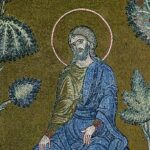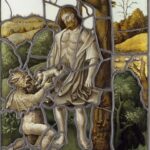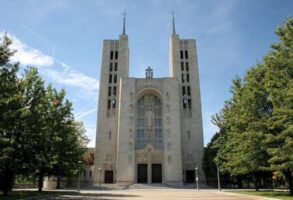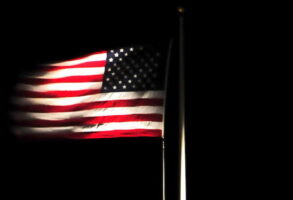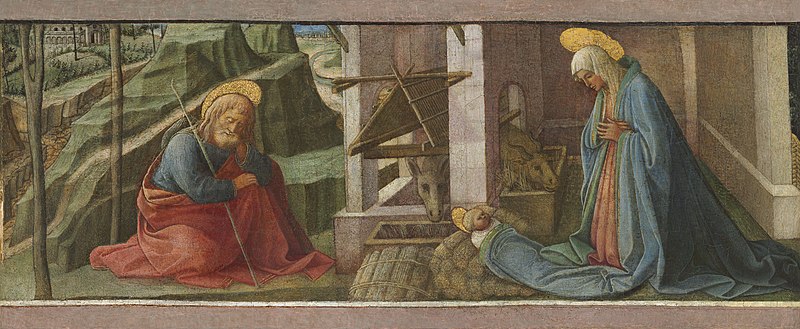
Published December 21, 2022
Now, on Christmas Day, the nine months have been fulfilled. What began on the day of Annunciation is made visible to the world in the person of the newborn babe of Bethlehem, who is both Son of God and Son of Mary. History is forever changed.
The “little flock” of whom Jesus will speak in Luke 12:32 (“Fear not, little flock, for it is your Father’s good pleasure to give you the kingdom”) is already here: in Mary and Joseph, humble servants of God; in the shepherds who leave the manger rejoicing; in the Magi who will come bearing gifts; in the slaughtered innocents and their grieving parents, precursors of the white-robed army of martyrs who will follow down the centuries. In a formal sense, the Church of Christ begins with the Paschal Mystery of the Lord’s passion, death, resurrection, and ascension, and the outpouring of the Holy Spirit at the first Christian Pentecost. Yet the Church is also present in Bethlehem in an anticipatory way.
Which is how it should be, since this axial moment in the human story, the birth of the incarnate Son of God, the Second Person of the Most Holy Trinity, began with the fiat, the answer of a trusting and obedient young woman to the angelic salutation and summons to motherhood. As St. John Paul II never tired of teaching, Mary’s fiat—“Be it done unto me according to your word” (Luke 1:38)—made her the first of disciples and established the paradigm of all discipleship: joyful obedience to the divine call. Everything else in the Church—evangelism, contemplation, authority, service—only makes sense in light of that Marian “yes” and the discipleship it uniquely expressed. Mary is the beginning of the Church. And Mary remains the model of the Church forever, because her Assumption reveals the destiny that God intended for humanity “in the beginning”—eternal life with the Thrice-Holy God.
At this Catholic moment, when so many—perhaps too many—are singularly focused on and disturbed by ecclesiastical dysfunction at every level of Catholic life, from the local parish to the Vatican, it is good, at Christmastide, to reflect on Mary and the Church—and on what Mary’s initial act of discipleship, that fiat which came to fruition “when Quirinius was governor of Syria” (Luke 2:2), means for us today. Hans Urs von Balthasar, pondering the first and third Joyful Mysteries of the rosary, points that meditation in the proper direction:
From the Mother’s disposition grows the disposition of the Church. The Church is not an external assembly of people brought together by a common religious purpose, but rather a reality that exists before we do and to which we owe what we are, through God and by the grace of God. No one helps himself to the sacraments; they are bestowed on a person as graces. . . . The Church is responsible for us before God; she is to rear us in her pure and holy spirit and not in our own . . . [which is how we become] “ecclesial souls.”
One of the great debates in the Catholic Church today touches this issue: Does the Church, created by God in Christ and formed in the image of Mary, create us? Or do we create the Church? To even hint at the latter is to empty the Church of its supernatural character and reduce Catholicism to an international non-governmental organization. Yet is not some part of that going on when it is suggested, in certain exercises of “synodality,” “listening,” “accompaniment,” and “discernment,” that the Church of the twenty-first century has the authority to modify or even correct the word of God? Or to refashion the Christ-given constitution of the Church? Or to bless in an uncritical way the spirit of the age?
Some months ago, my friend Jimmy Lai, the Catholic convert and prisoner of conscience in Hong Kong (about whose unjust persecution and imprisonment the Holy See has not managed to speak a single public word of protest) sent me from his cell in Stanley Prison a beautiful pencil-and-crayon depiction of the Annunciation entitled, simply, “Yes!” This courageous man with a truly “ecclesial soul” knows that the Church created him in baptism. And that grace has empowered him to live the virtue of fortitude and be a fearless defender of justice, truth, and freedom.
Jimmy Lai will spend Christmas in prison, but he will be free in the deepest meaning of the word. For he is free in the truth of Christ, born for us that happy morning in Bethlehem of Judea.
George Weigel, Distinguished Senior Fellow of the Ethics and Public Policy Center, is a Catholic theologian and one of America’s leading public intellectuals. He holds EPPC’s William E. Simon Chair in Catholic Studies.
Image by National Gallery of art on Wikimedia Commons licensed via Creative Commons.
George Weigel, Distinguished Senior Fellow of the Ethics and Public Policy Center, is a Catholic theologian and one of America’s leading public intellectuals. He holds EPPC’s William E. Simon Chair in Catholic Studies.


